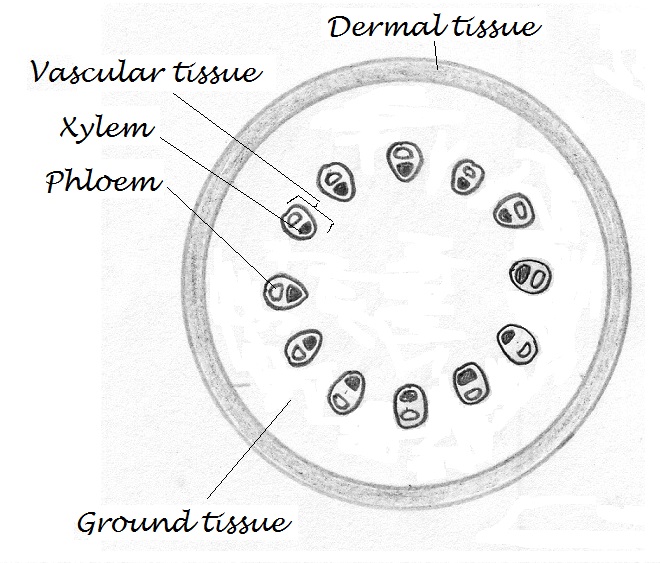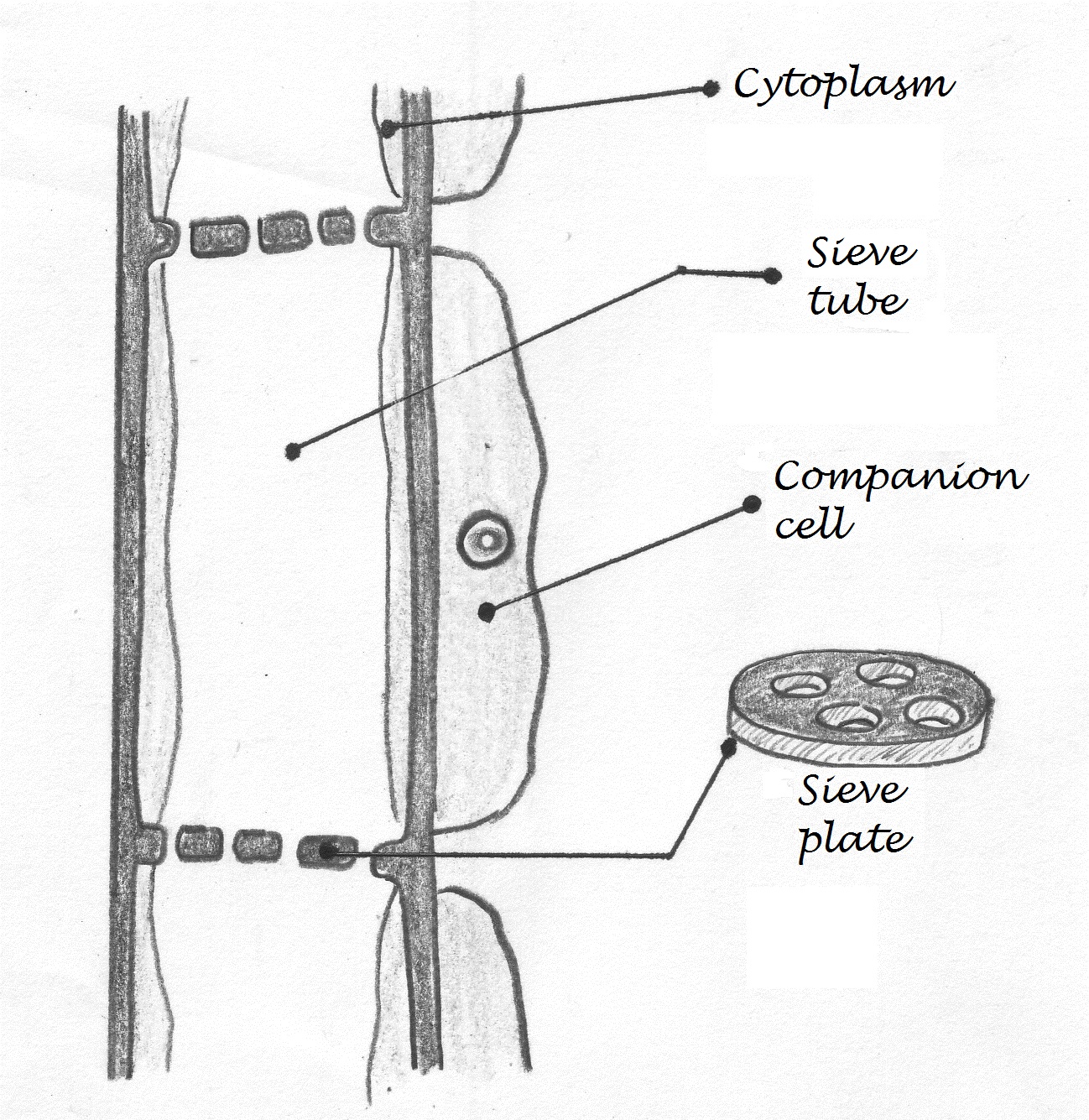Question
- Leaving Cert. Biology (Higher) 2014: Q14
- Back to the question >
Answer
(a)
(i)
(ii) Methods of cross pollination:
(iii) Self-pollination would mean less genetic variation and a concentration of any weakness resulting in a less robust plant. Cross pollination ensures variation, which means that even if some plants had a particular weakness, e.g. susceptible to disease, all of the plants wouldn’t be affected.
(iv) The pollen grain lands on the stigma and is stimulated to grow a pollen tube by sugars in the stigma. The pollen tube controlled by the tube nucleus grows through the style down to the micropyle of the ovule. This nucleus degenerates once the pollen tube reaches the micropyle. The generative nucleus divides by mitosis as it moves down the pollen tube producing two male gametes. The two haploid gametes move into the ovule through the micropyle. One gamete fertilises the egg nucleus to form a diploid zygote, which will develop into the embryo. The second gamete joins with the two polar nuclei to form a triploid endosperm nucleus.
(v) The ovary
(b)
(i)

(ii)
(iii)
Xylem:

Phloem:

(iv) Phloem
(v) The function of meristematic tissue is growth. This is where cell division takes place.
(c)
(i) The root hairs are extensions of the epidermal cells — their function is to increase the surface area for absorption. The root hairs have thin walls and no cuticle so it is easy for the water to enter. Water enters by osmosis and then diffuses from the root hairs into the ground tissue. The water crosses the ground tissue into the xylem by osmosis.
(ii) Xylem
(iii) Features of xylem tissue:
(iv)
Root pressure:
When water enters the roots by osmosis there is a build up of water in the roots, which causes root pressure, which pushes water up through the plant.
Transpiration:
This is the loss of water vapour from the leaves of plants. The water vapour is lost through stomata on the undersides of the leaves. As the water evaporates there is less water in the ground tissue than in the xylem so water moves by osmosis into the ground tissue. Due to the highly cohesive nature of water, as one molecule leaves the xylem it ‘pulls’ the next molecule, which pulls the next one and so on all the way down the stem and root of the plant.
(i)
- Anther
- Stigma
(ii) Methods of cross pollination:
- Insect
- Wind
(iii) Self-pollination would mean less genetic variation and a concentration of any weakness resulting in a less robust plant. Cross pollination ensures variation, which means that even if some plants had a particular weakness, e.g. susceptible to disease, all of the plants wouldn’t be affected.
(iv) The pollen grain lands on the stigma and is stimulated to grow a pollen tube by sugars in the stigma. The pollen tube controlled by the tube nucleus grows through the style down to the micropyle of the ovule. This nucleus degenerates once the pollen tube reaches the micropyle. The generative nucleus divides by mitosis as it moves down the pollen tube producing two male gametes. The two haploid gametes move into the ovule through the micropyle. One gamete fertilises the egg nucleus to form a diploid zygote, which will develop into the embryo. The second gamete joins with the two polar nuclei to form a triploid endosperm nucleus.
(v) The ovary
(b)
(i)

(ii)
- Vascular tissue
- Vascular tissue is in the centre of the root.
- Ground tissue gives strength and support to the plant.
(iii)
Xylem:

Phloem:

(iv) Phloem
(v) The function of meristematic tissue is growth. This is where cell division takes place.
(c)
(i) The root hairs are extensions of the epidermal cells — their function is to increase the surface area for absorption. The root hairs have thin walls and no cuticle so it is easy for the water to enter. Water enters by osmosis and then diffuses from the root hairs into the ground tissue. The water crosses the ground tissue into the xylem by osmosis.
(ii) Xylem
(iii) Features of xylem tissue:
- Thick walls strengthened with lignin mean the xylem can withstand turgor pressure.
- Xylem vessels have pits in their walls to allow the movement of water across.
(iv)
Root pressure:
When water enters the roots by osmosis there is a build up of water in the roots, which causes root pressure, which pushes water up through the plant.
Transpiration:
This is the loss of water vapour from the leaves of plants. The water vapour is lost through stomata on the undersides of the leaves. As the water evaporates there is less water in the ground tissue than in the xylem so water moves by osmosis into the ground tissue. Due to the highly cohesive nature of water, as one molecule leaves the xylem it ‘pulls’ the next molecule, which pulls the next one and so on all the way down the stem and root of the plant.
